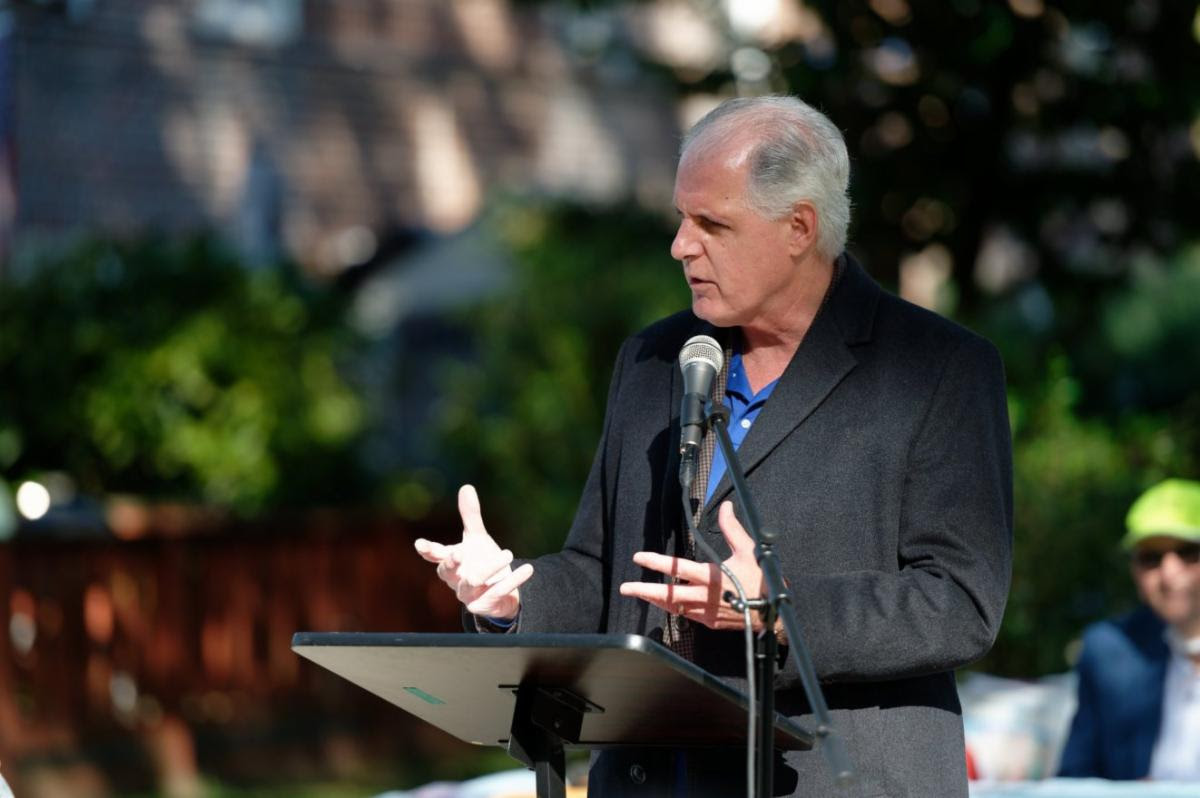
NYCHA is approaching its lead paint problem by failing to thoroughly seek out apartments that may pose a danger to young children and allowing tenants into repair areas that might not yet be safe, according to the first quarterly report by the authority’s federal monitor.
The report released Monday by Bart Schwartz, the federal monitor tapped to supervise NYCHA’s adherence to the agreement, also said challenges loom with everything from deploying the software used to track work orders to staffing new units designed to ensure the quality and integrity of the authority’s work.
Schwartz, who started Feb. 28, highlighted concerns about NYCHA’s handling of lead paint, mold, pests, faulty elevators, and heat and hot water supply from April through June 2019.
"We are mindful that the residents want — and deserve — swift progress, but in some areas lasting and meaningful change will take time," Schwartz noted. "While this report describes the many challenges that we have identified during the first months of the Monitorship, it also provides a progress report and a foundation for the future."

At the end of January, the city signed an agreement empowering federal prosecutors and the U.S. Department of Housing and Urban Development to select a monitor to oversee NYCHA and play a role in selecting its next CEO. Under the arrangement, the federal government dropped a lawsuit filed against NYCHA for misleading it and the general public about the scope of hazards inside its properties. The city committed to investing at least $2.2 billion into capital work at NYCHA over the next decade and to fully abate lead in all its apartments within 20 years.
After acknowledging missteps at NYCHA, Mayor Bill de Blasio’s administration initially said the city was aware of 19 children, who while living in public housing took tests showing they had elevated blood lead levels. The city’s Health Department, however, had identified dozens more children under the age of 6 who had concerning blood lead levels, according to tests. That number has since risen as the city lowered the threshold at which it takes precautions. Childhood lead exposure can delay physical and mental development and cause learning difficulties.
Since 2019, NYCHA has referred 18 cases of children with elevated blood lead levels to the federal government, according to the report.
NYCHA identified 3,028 units that are likely to contain lead paint and are frequented by children under 6, which have been prioritized for inspections, according to a certification included in the monitor’s report. But this figure came from a database known to contain out-of-date records, according to the report. Therefore, Schwartz said, the city should take additional steps to identify apartments with young children through an education campaign and to make the process for adding members to a household less intimidating.
The authority submitted ideas for identifying additional children in public housing to the federal monitor, and is awaiting approval on these recommendations, according to Chester Soria, a NYCHA spokesman.

HUD guidelines say residents should be excluded from areas where work could disturb lead paint until an area is tested and cleared. But the monitor’s report says that in many instances weeks lapsed before the dust wipe tests were conducted, and the locations were reoccupied by tenants. Some tests were taken near occupants’ belongings, including in one case, a stuffed animal.
City sanitation inspectors assigned to work on behalf of NYCHA reported some vendors were not abiding by safety standards. At least eight vendors have received one letter saying it has breached its contract and requesting a reply describing how the job will be properly performed before the work can resume. Three have gotten multiple memos, according to the monitor’s report.
The authority’s compliance team, in tandem with federal prosecutors, reported compliance issues and has submitted a corrective action plan on the matter, according to Soria.
The monitor’s team is discussing with NYCHA suspending vendors found to have violated the rules three times, according to the report.
"NYCHA’s challenges are deep rooted and changes will not happen overnight, but with the full commitment of our dedicated staff, we are taking the necessary steps to transform the Authority and to improve the quality of life for our residents," NYCHA General Manager Vito Mustaciuolo said in a statement.
NYCHA, as outlined in the settlement, has hired a management consulting firm to assess its organizational structure and recommend improvements. It has launched the required Environmental, Health and Safety, Quality Assurance and Compliance units, but the monitor’s report notes two proposed departmental heads were rejected for lacking required qualifications and experience. Schwartz’s team says the Compliance Unit seems narrowly focused on fulfilling regulatory functions and has just two inspectors for an agency with some 10,000 employees.
The report says the monitor has recommended establishing a tool for fielding anonymous complaints, such as a hotline staffed by a third party vendor, and expanding the units.
The authority has been meeting weekly with the monitor to flesh out its internal efforts on improving these departments, Soria said.
Insufficient staffing also contributed to poor elevator performance, trash and pest management and other persistent problems, according to the report. It noted that when factoring in new hires, NYCHA will have 120 exterminators, or about one per every 1,400 apartments.
Personnel are also relying on Maximo, an asset management system in which jobs that are closed often represent a small portion of the work needed, according to the report.
The report notes the monitor is sharing with NYCHA how other management companies use Maximo more effectively and is collaborating on ways to more effectively employ the system.
"This Administration remains committed to meeting the needs of all 400,000 New Yorkers who call NYCHA home," de Blasio’s press secretary, Freddi Goldstein, said in a statement. " If the Monitor has more concrete solutions, we’re all ears. It’s going to take continued partnership from everyone to right this ship and improve the quality of life for all of our residents."


































